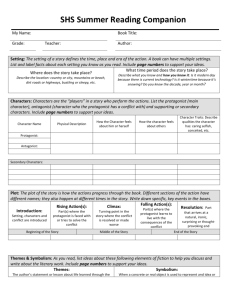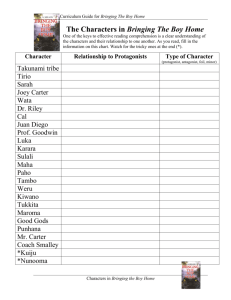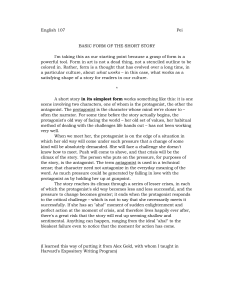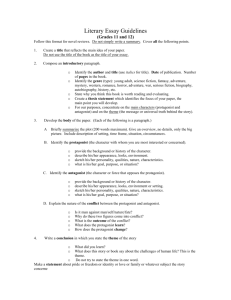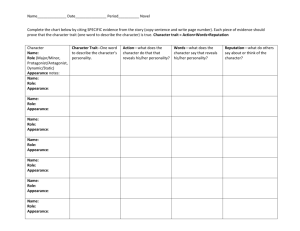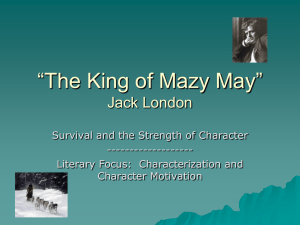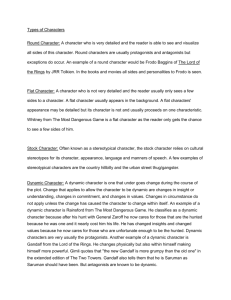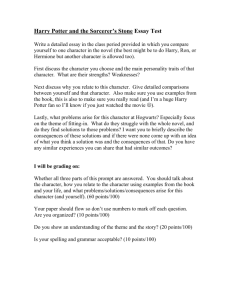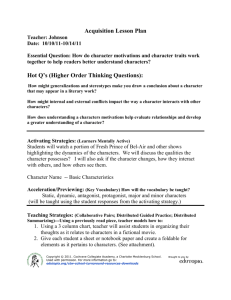Character Types in Fiction: Protagonist, Antagonist & More
advertisement
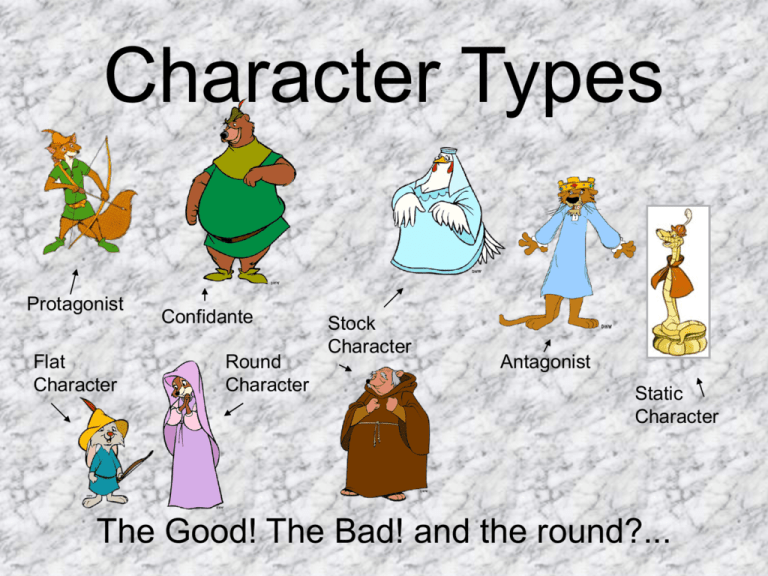
Character Types Protagonist Flat Character Confidante Round Character Stock Character Antagonist Static Character The Good! The Bad! and the round?... Character Types • Fiction writers employ a variety of characters while weaving their tales. Beyond the standard definitions of protagonist (the main character in a literary work) and antagonist (the main character or force that opposes the protagonist in a literary work), recognizing the types of characters and the parts they play while reading an interesting story can add to the experience. In addition, a fuller understanding of the character types and their uses can increase a writer’s effectiveness in weaving his own fictional tales. Protagonist • The main character in a story. Most often this is the hero, but in some cases they are the bad guys. – Bugs Bunny is the main character in the Looney Tunes – Katniss is the Protagonist in the Hunger Games – Harry Potter is the Protagonist in the Harry Potter series Antagonist • The bad guy or force that opposes the protagonist. – Snow is the antagonist in the Hunger Games – Plankton is the antagonist in SpongeBob Square Pants – Voldemort is the antagonist in Harry Potter Character Types • Confidante- someone in whom the central character confides, thus revealing the main character’s personality, thoughts, and intentions. The confidante does not need to be a person. - The nurse this the confidante in Romeo and Juliet - Hagrid is a confidante in Harry Potter Character Types • Dynamic Character - a character which changes during the course of a story or novel. The change in outlook or character is permanent. Sometimes a dynamic character is called a developing character. Example: Ebenezer Scrooge, in A Christmas Carol by Dickens, was very stingy with his money. He worked his employees very very hard for little pay. After his experiences with the ghosts that visited him, he changed his ways, paying his employees a more than fair wage, providing days off work and actually giving gifts. Character Types • Flat Character - a character who reveals only one, maybe two, personality traits in a story or novel, and the trait(s) do not change. - In the Hunger Game, the other tributes are all flat characters as we only know a small about them Character Types • Round Character - a well developed character who demonstrates varied and sometimes contradictory traits. Round characters are usually dynamic (change in some way over the course of a story). - In Harry Potter, Hermione and Ron are round characters. - In the Hunger Games, Peeta is a round character Character Types • Static Character – a character that remains primarily the same throughout a story or novel. Events in the story do not alter a static character’s outlook, personality, motivation, perception, habits, etc. Example: Bert, a bumbling salesman, never takes the time to organize his files, properly record his sales, or follow up with customers. Finally, his boss gets fed up and fires him. Bert struggles for two months to find a new sales position. During that time, his car is repossessed for nonpayment and he maxes out his credit cards. Bert finally finds a new sales position but, before a week passes, he is called into a conference with his new boss. Bert is informed he must get organized or he’ll be fired. A week later the new boss fires Bert after he fails to follow up with an important customer. In this example Bert is a static character. Character Types • Stock Character - a special kind of flat character who is instantly recognizable to most readers. Possible examples include the “ruthless businessman”, “shushing old librarian” or “dumb jock.” They are not the focus nor developed in the story. Example: In the depths of an old castle a mad scientist hatches his evil plan to take over the world! In this example the mad scientist is a stock character because he is someone that we instantly recognize and understand with little or no development.
